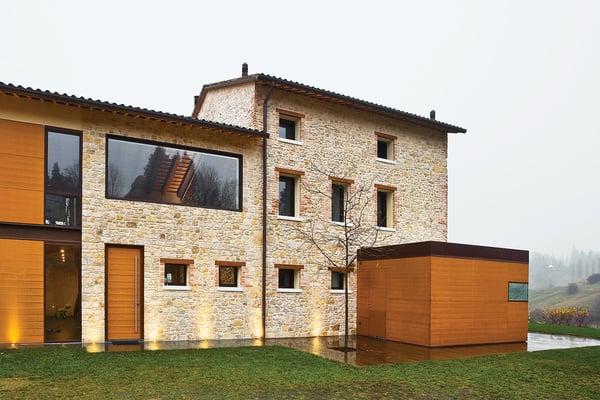
This private house in the foothills of northern Italy was designed by Caprioglio Associati Architects for a couple who wished to trade a tiny apartment for a renovated farmhouse in the country. The couple wanted to move out of the city of Asolo to move to the country where they could start a family. They moved a short drive from Asolo to an area called Monfumo, or “silent hills.” After two years of searching and three real estate agents later, they found a crumbling and abandoned farmhouse with an overgrown vineyard, tucked away amidst the rolling hills. They were not able to raise the existing structure due to strict government protections of existing buildings. It would have been faster and cheaper to tear down the existing structure, yet the homeowners liked its character so much, they wanted to keep thinking their home would be the old structure.
The architects paired the indigenous sandstone of the existing structure with teak mounted on two-foot-wide panels. The structure at right holds the glass-topped kitchen.
After preserving the exterior facade, the interior was given a modern update. Because this was once a farmer’s house to store crops, the rooms were tiny and there were a lot of them. The homeowners wanted a luminous space to capture the beauty of the surrounding environment. They wanted their living areas to be at the very top to make the most of the light. The most defining element of the first floor is a massive central staircase and catwalk system composed of glass and steel. Due to the high volume of the structure, the team decided that the home would be comprised of four floors connected via an elevator accessed from an underground garage and wine cellar.
Locally sourced Italian slate covers the ground floor rooms; the coat rack near the entrance is from Zanotta.
Rising to a catwalk above, a huge glass-and-steel central stair envisioned by the architect spans four floors of this newly expanded house.
In the dining area a vintage table from a shop in Barcelona is surrounded by Giandomenico Belotti Spaghetti chairs. The space, which also includes the kitchen, occupies a 1970s addition.
The homeowners wanted a big kitchen to live in, not a small technical place to cook. At the far end, a glass ceiling presents an open-air feeling. The homeowner stated that cooking when it’s raining is very fascinating.
The architect placed the windows at the homeowner’s eye level so that she would be able to see her son playing in the yard outside.
The sitting area and office are on the second floor, reached via the catwalk. “We watch TV here, use the computer, and sit by the fire,” states the homeowner. “The way you access the space is part of the architecture, and that’s part of the beauty of it.” Near the sofa by Piero Lissoni for Cassina is a Bourgie lamp from Kartell; on the large table, made from old roof beams, is a Taccia lamp from Flos.
The top floor holds the homeowner’s bedroom suite, with a dressing room and built-in spa. “The farmers dried their crops up here,” states the homeowner. “We knew right away this was the spot that we wanted to have our own room.”
Photos: Courtesy of Caprioglio Associati Architects and Helenio Barbetta
The floor plan shows three of the house’s four levels; the basement level contains a wine cellar and laundry room.

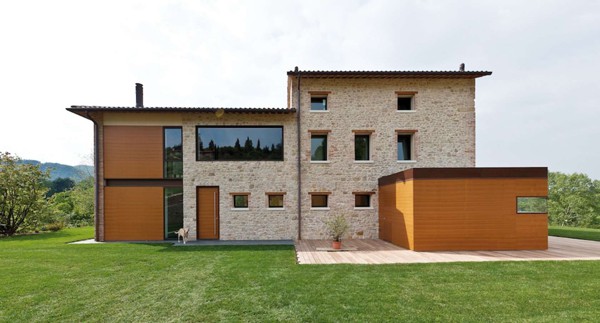
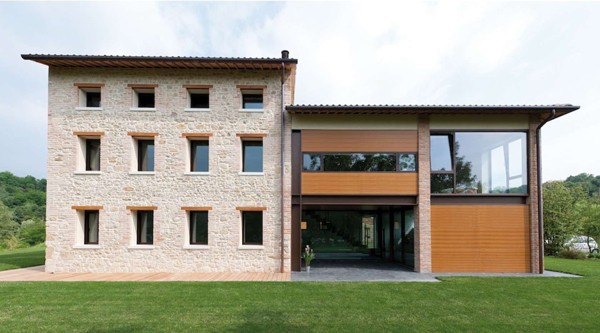
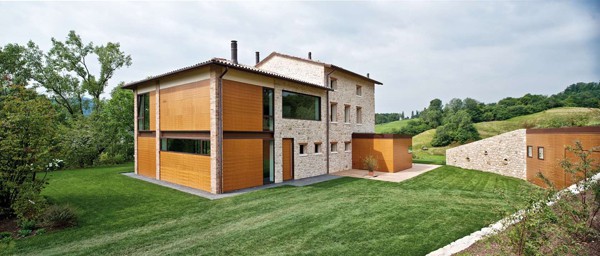
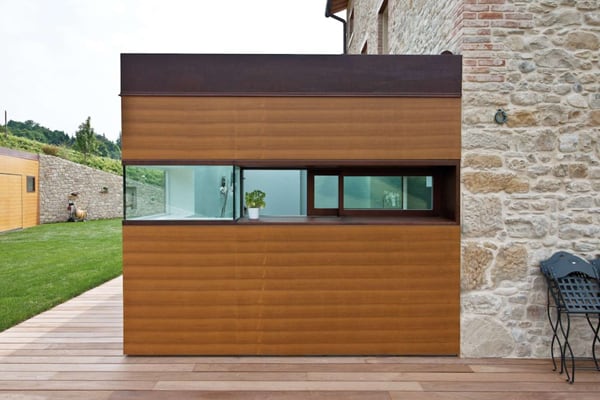
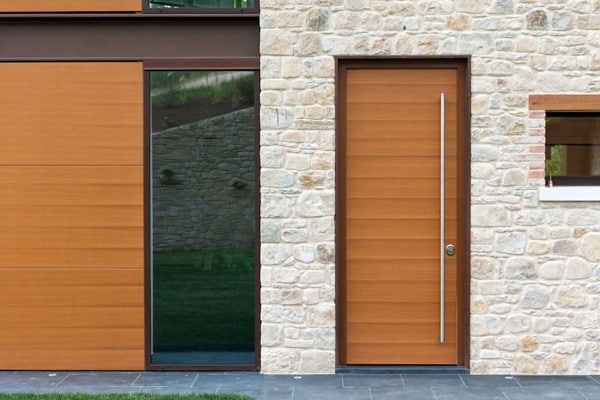
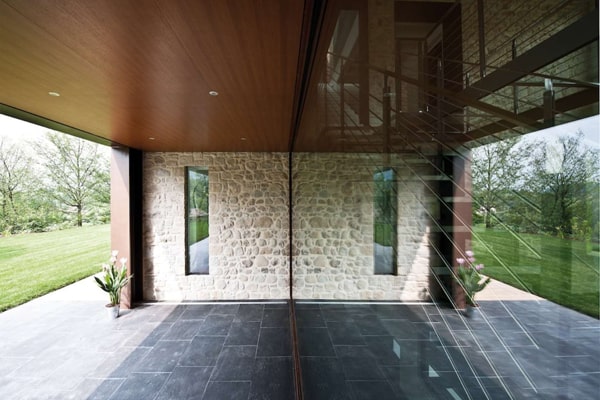
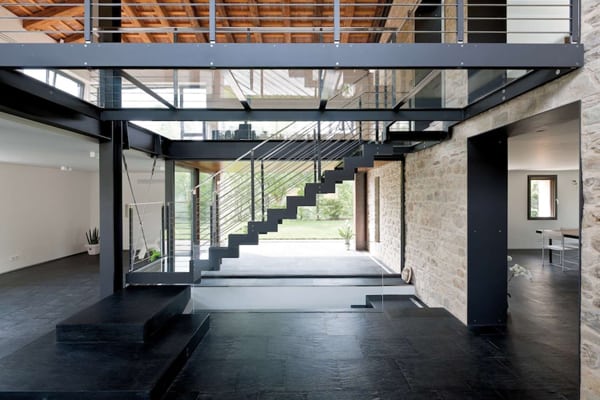
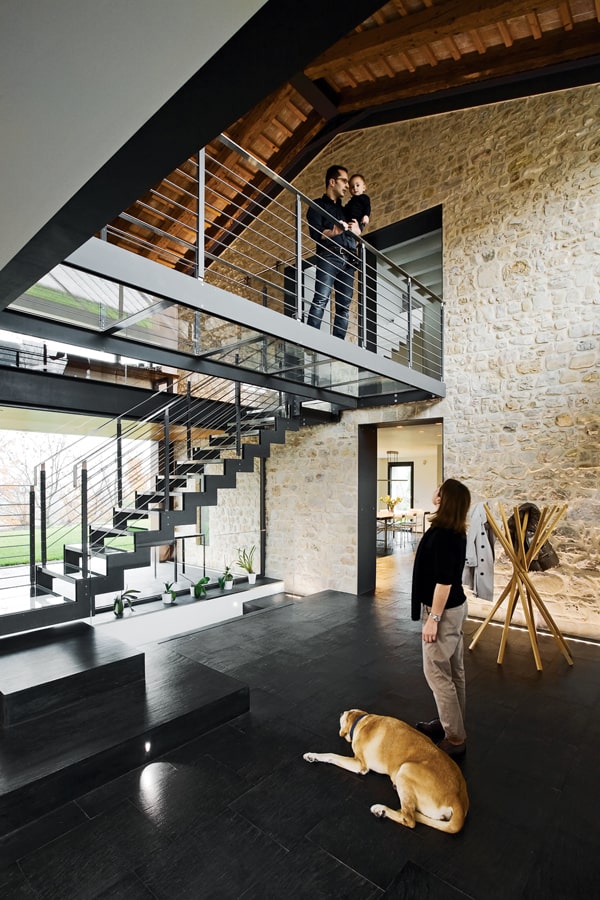
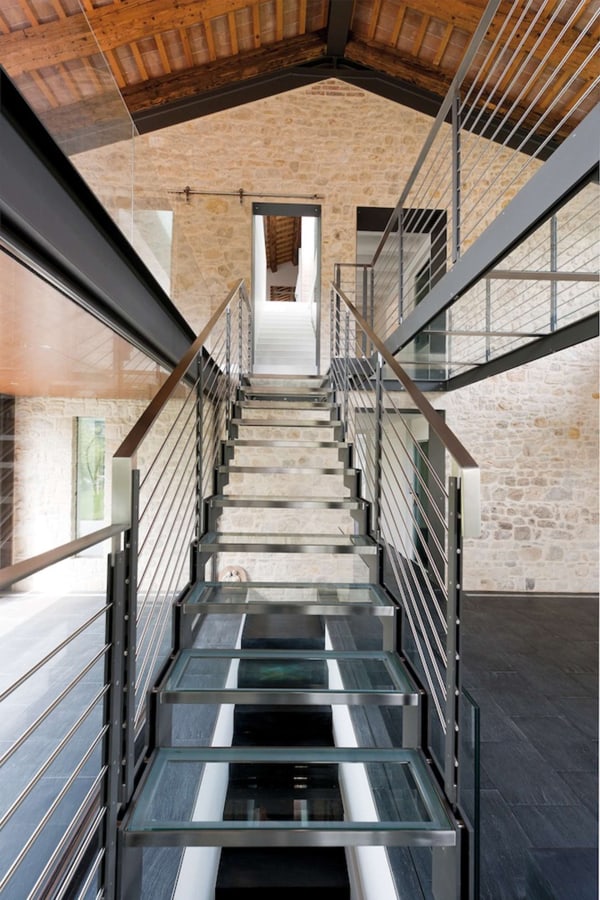
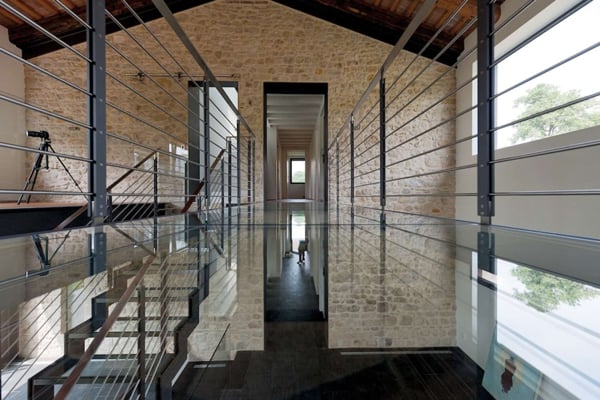
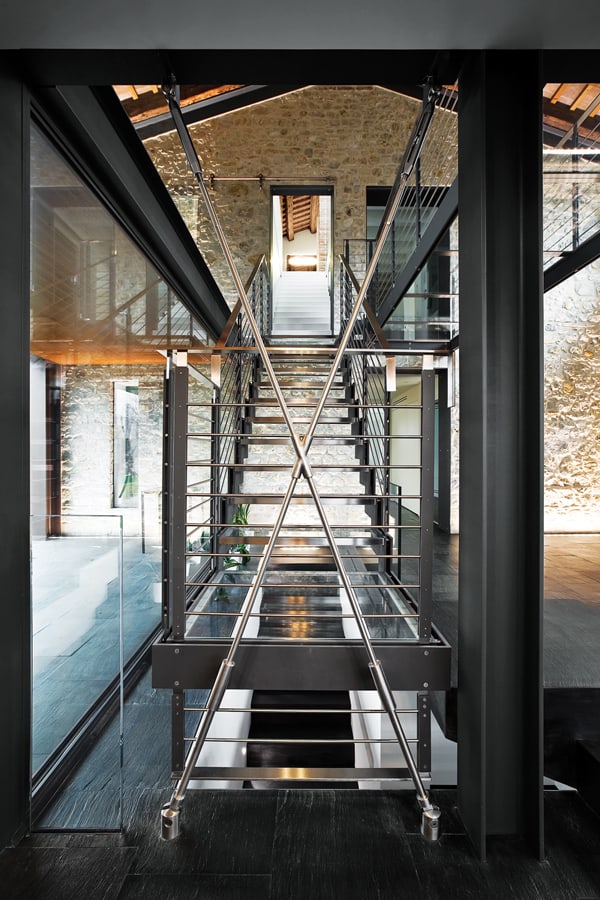
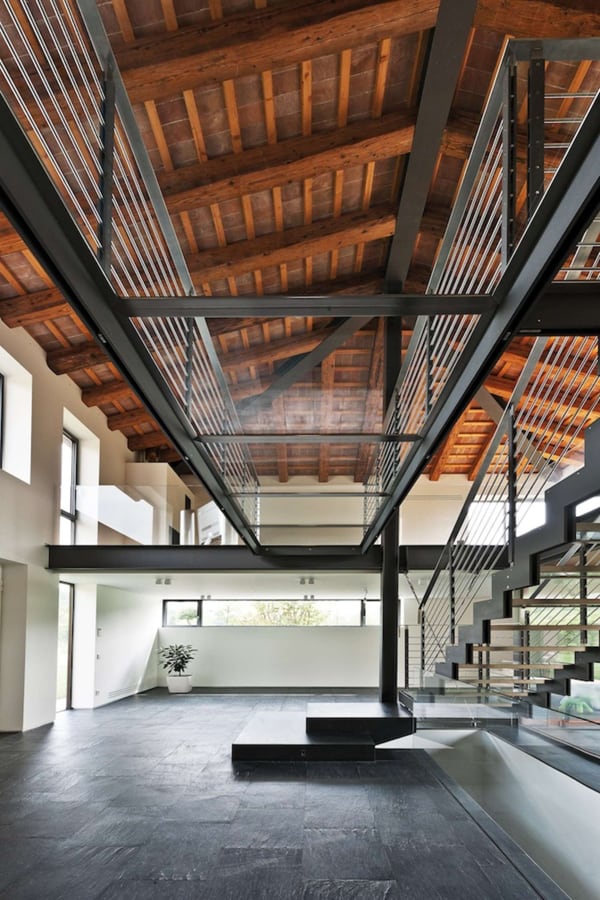
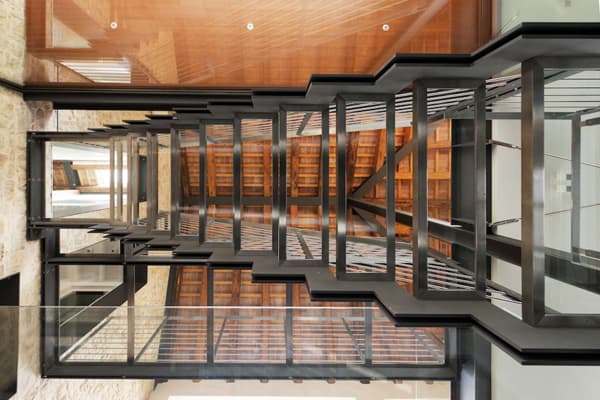
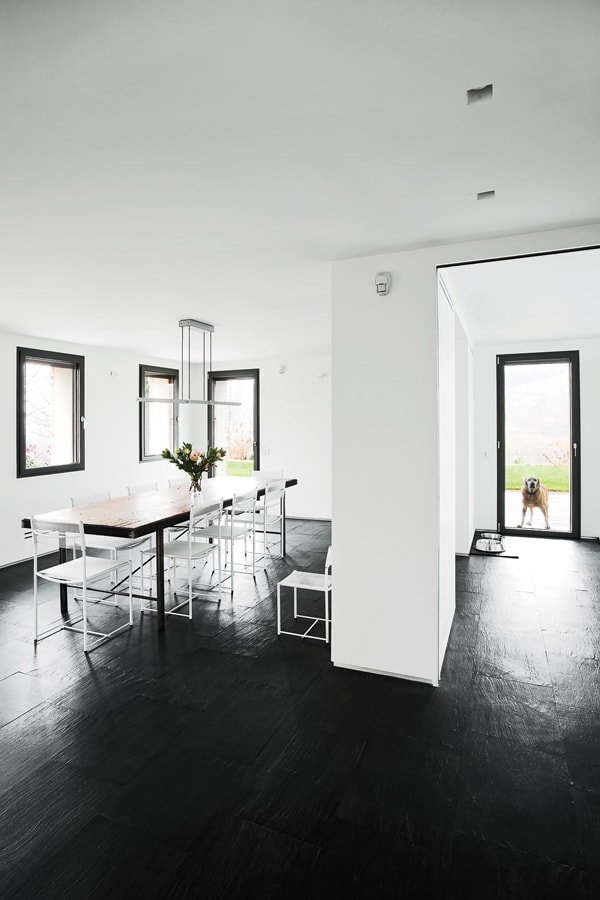
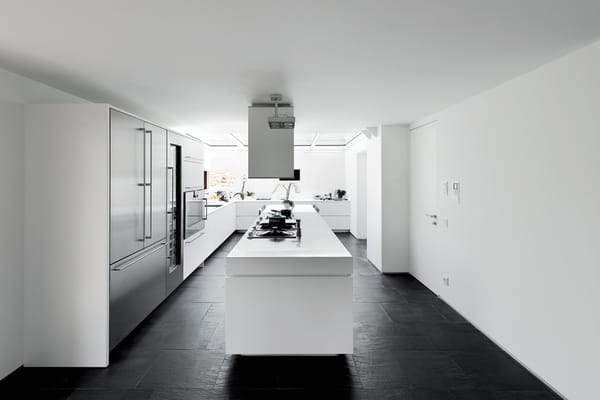
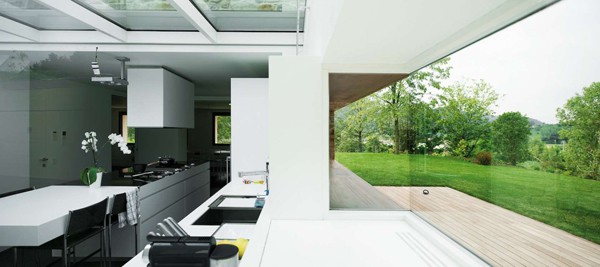

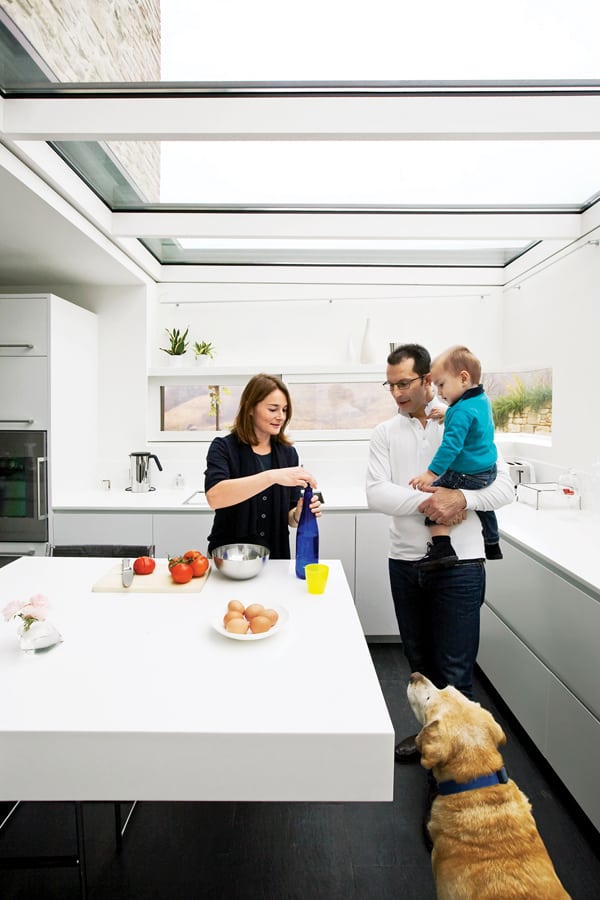

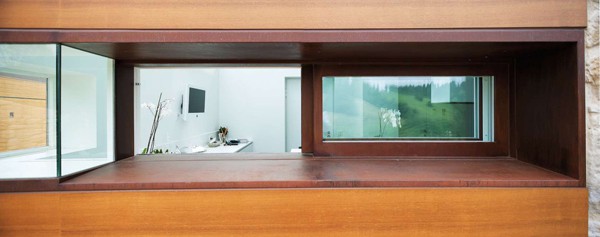
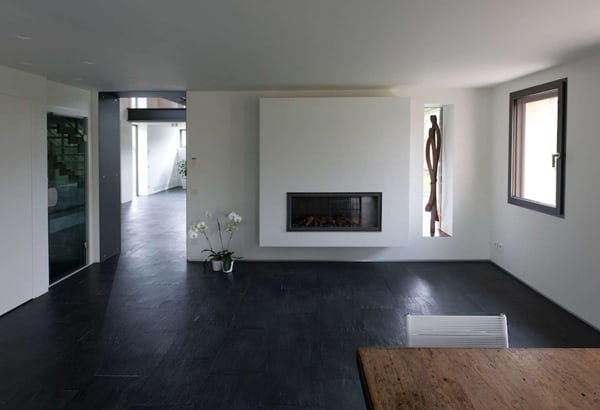
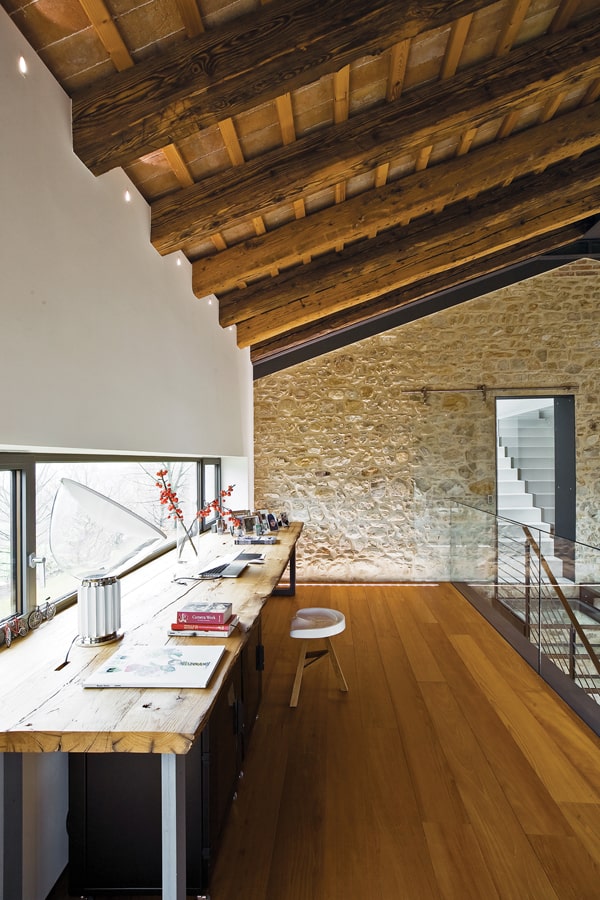
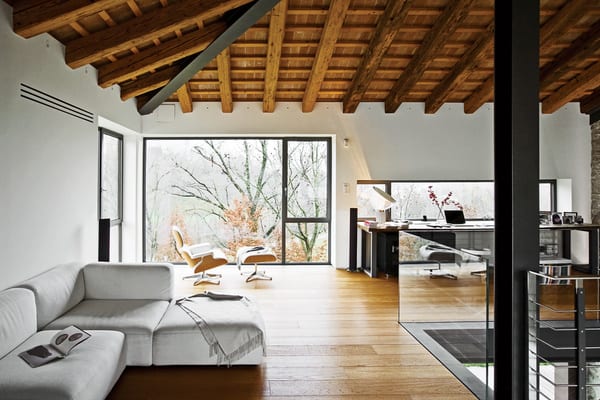
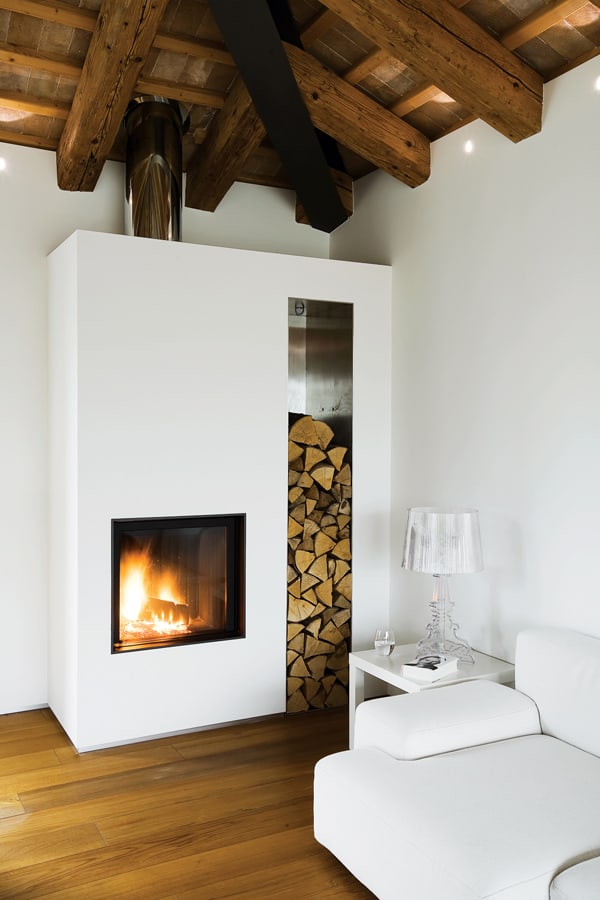
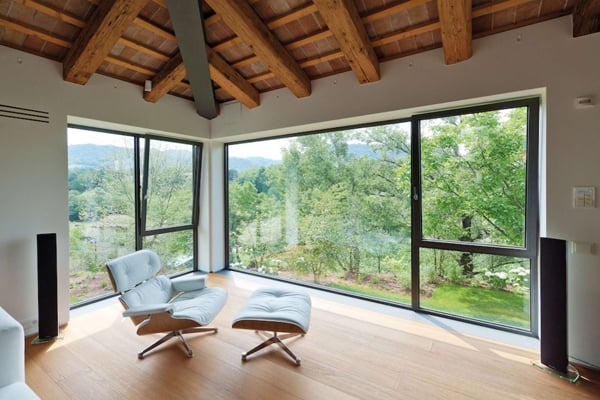
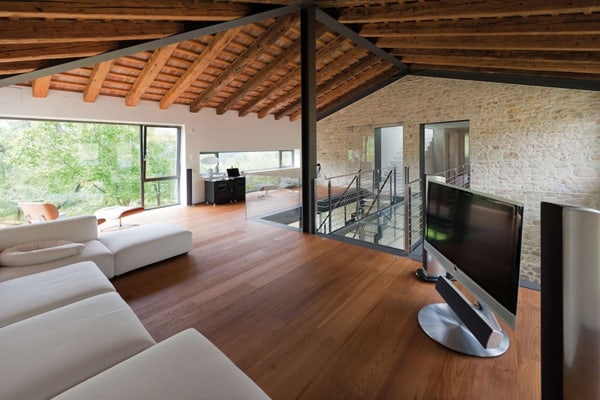
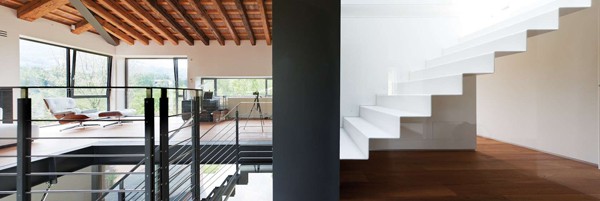
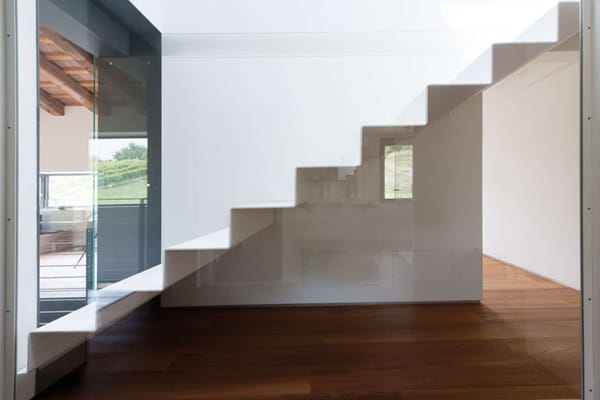
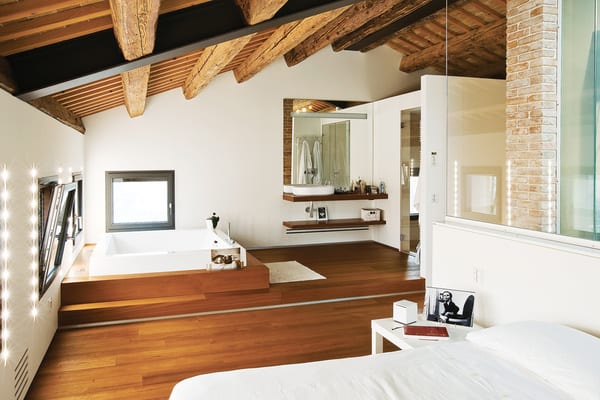

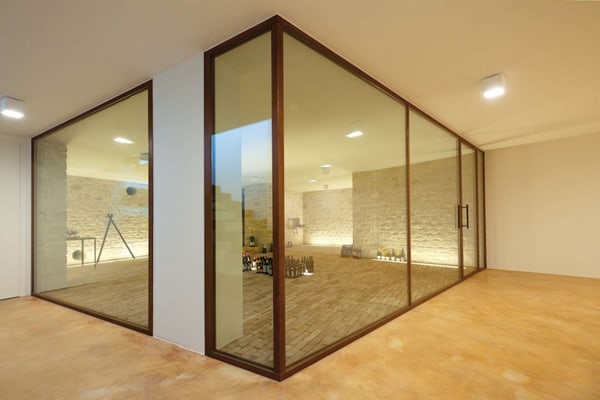
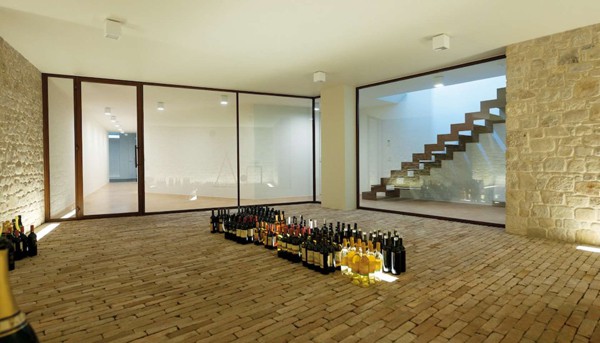
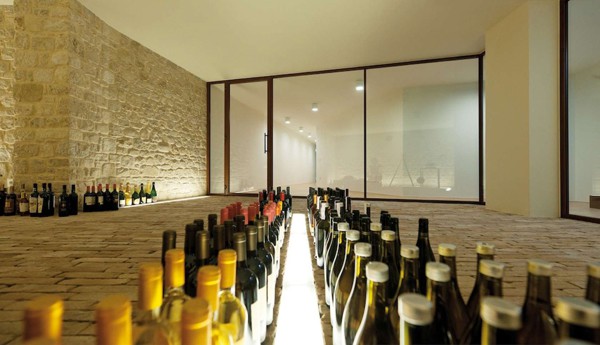
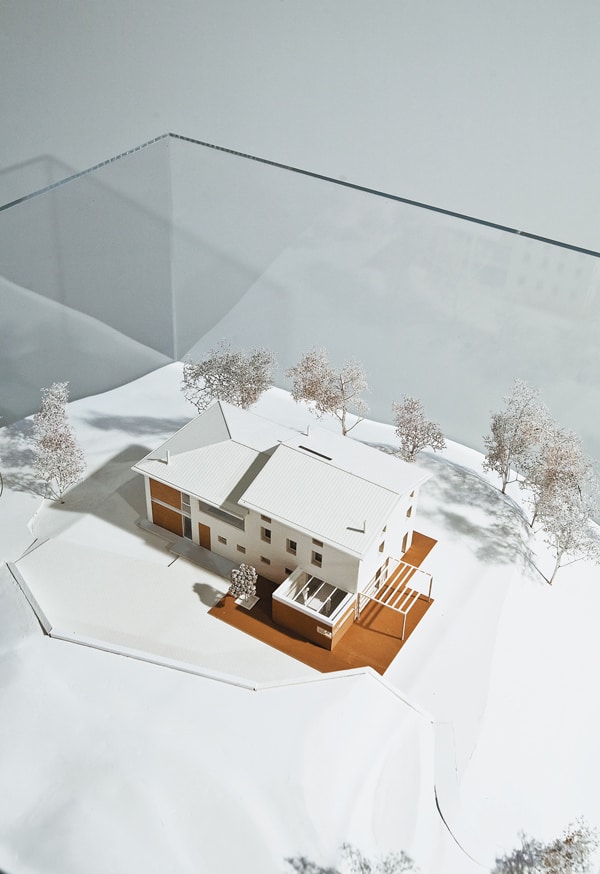

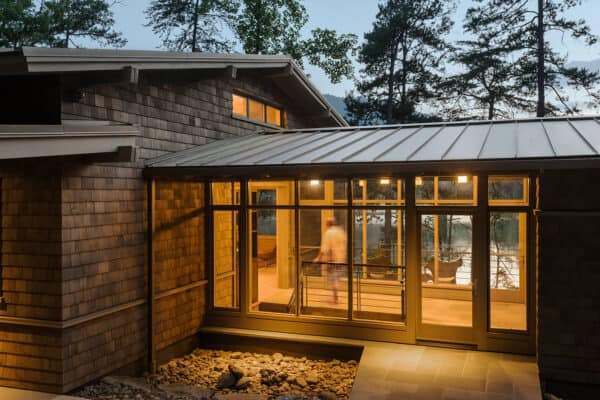
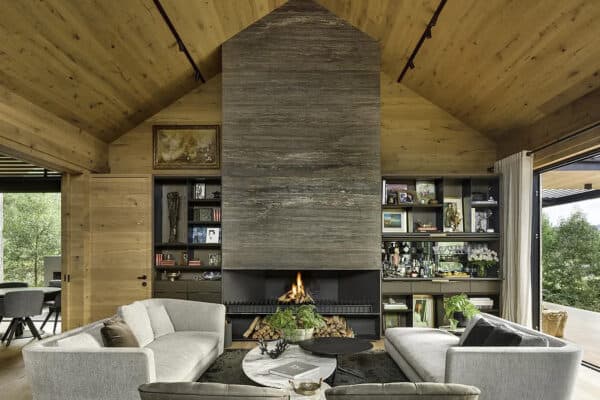

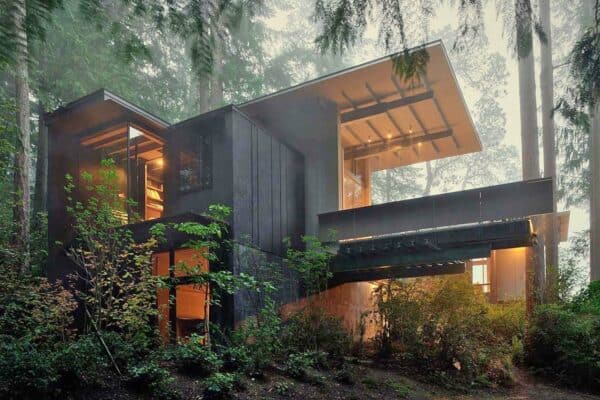
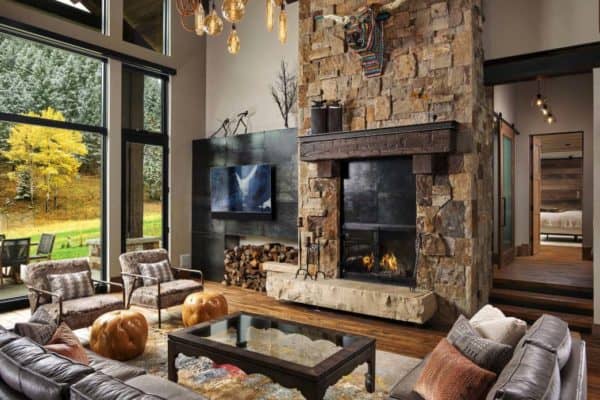

0 comments